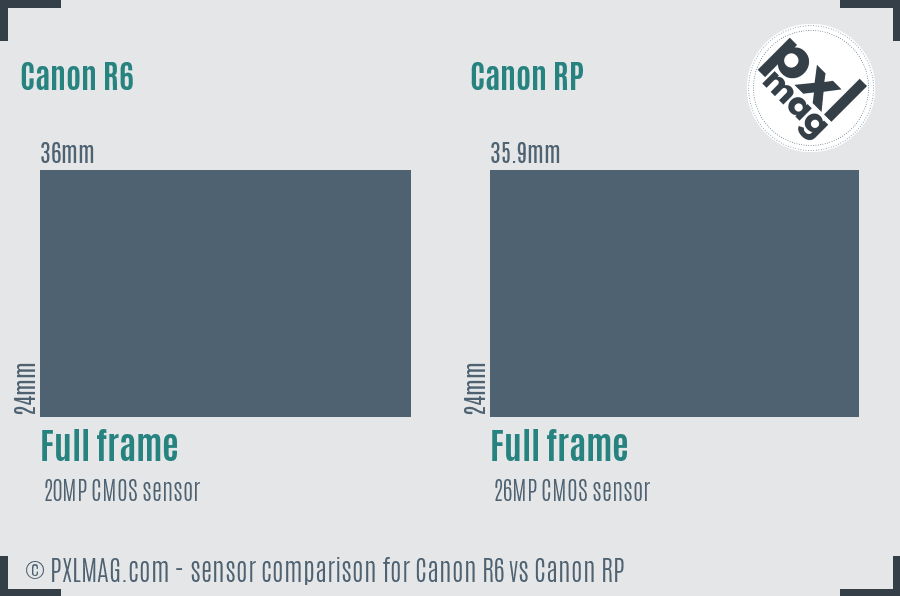When looking for a new digital camera, there are many factors you need to consider, such as image quality, portability, and cost-effectiveness. Canon is a popular brand in the camera market and has produced great cameras over the years. Canon R6 and RP are two cameras that have caught the attention of many photography enthusiasts.
In this article, we will compare the canon r6 vs rp in terms of their features, advantages, and drawbacks, to help you choose which camera would better fulfill your needs.
Physical attributes
The Canon R6 and RP are quite similar in terms of physical size and weight, with only a few minor differences. The R6 is slightly larger and heavier than the RP, but the difference is barely noticeable when you hold them. Both cameras are lightweight and compact, making them ideal for traveling photographers who want to capture quality images without adding weight to their travel bags.

The RP is made of magnesium alloy and polycarbonate, while R6 is made of magnesium alloy and a polycarbonate resin with glass fiber. These materials are durable and can withstand harsh weather conditions. The R6 is weather-sealed, making it ideal for shooting in all weather conditions. The RP, on the other hand, is not weather-sealed, so you have to be careful when using it outdoors in harsh conditions.

Image quality
When it comes to image quality, Canon R6 takes the lead. The R6 has a 20-megapixel full-frame sensor and can shoot 4K videos at 60 frames per second. Additionally, it has a 10-bit output, offering a wider color range than the RP.
The RP, on the other hand, has a lower-end 26.2-megapixel full-frame sensor and can only shoot 4K videos at 30 frames per second. Furthermore, it has an 8-bit output, which doesn’t give as many options for post-processing.
In terms of dynamic range, the R6 has a wider range than the RP, which means that it captures more details in highlights and shadows, making your images appear more lifelike.
Autofocus
The autofocus system is another factor that separates the two cameras. The R6 has a 1053-point autofocus system, which is advanced and can autofocus in various conditions, including low light. The autofocus system also detects and tracks eyes, faces, and animals, ensuring that your subjects in focus at all times.

The RP, on the other hand, has only 477 autofocus points, and it struggles in low-light conditions. The RP also lacks eye and animal detection autofocus, which can be inconvenient for photographers who need to take pictures of moving subjects.

Battery
Battery life is an essential factor to consider when buying a camera. The R6 has a higher battery capacity than the RP, with a rating of approximately 510 shots per charge. The RP, on the other hand, has a battery rating of approximately 250 shots per charge, which is less than half of what the R6 offers. If you are a heavy camera user, you would need to carry a few extra batteries if you opt for the RP.

Price

Price is a significant factor for many camera buyers, and in this section, RP takes the lead. The RP is more wallet-friendly than the R6, making it ideal for photographers on a budget. The RP retails at around $999, while the R6 retails at around $2400. However, the extra features that come with the R6 account for the price difference.

Conclusion
In conclusion, the Canon R6 and RP are both excellent cameras with features that cater to different photography needs. If you are a professional photographer looking for a camera with advanced features, Canon R6 is the way to go. The R6 has better image quality, advanced auto-focus system, weather-sealed body, and more extended battery capacity. However, the R6 comes at a higher price point than the RP.
On the other hand, if you are an amateur or a photography enthusiast on a budget, the Canon RP is an excellent choice. The RP has a lower price point, lightweight, and more accessible to carry around, and it is still an excellent camera to capture quality images.
Whichever camera you choose between the Canon R6 and RP, remember that these cameras share the same lens mount, allowing you to use Canon’s extensive range of lenses. Additionally, they both have wifi and Bluetooth connectivity, which facilitates sharing and transfer of files to other devices.
Choose a camera that meets your particular needs as a photographer and delivers on the results you want. With the factors mentioned above, you can make an informed decision on which camera is better suited for you.

